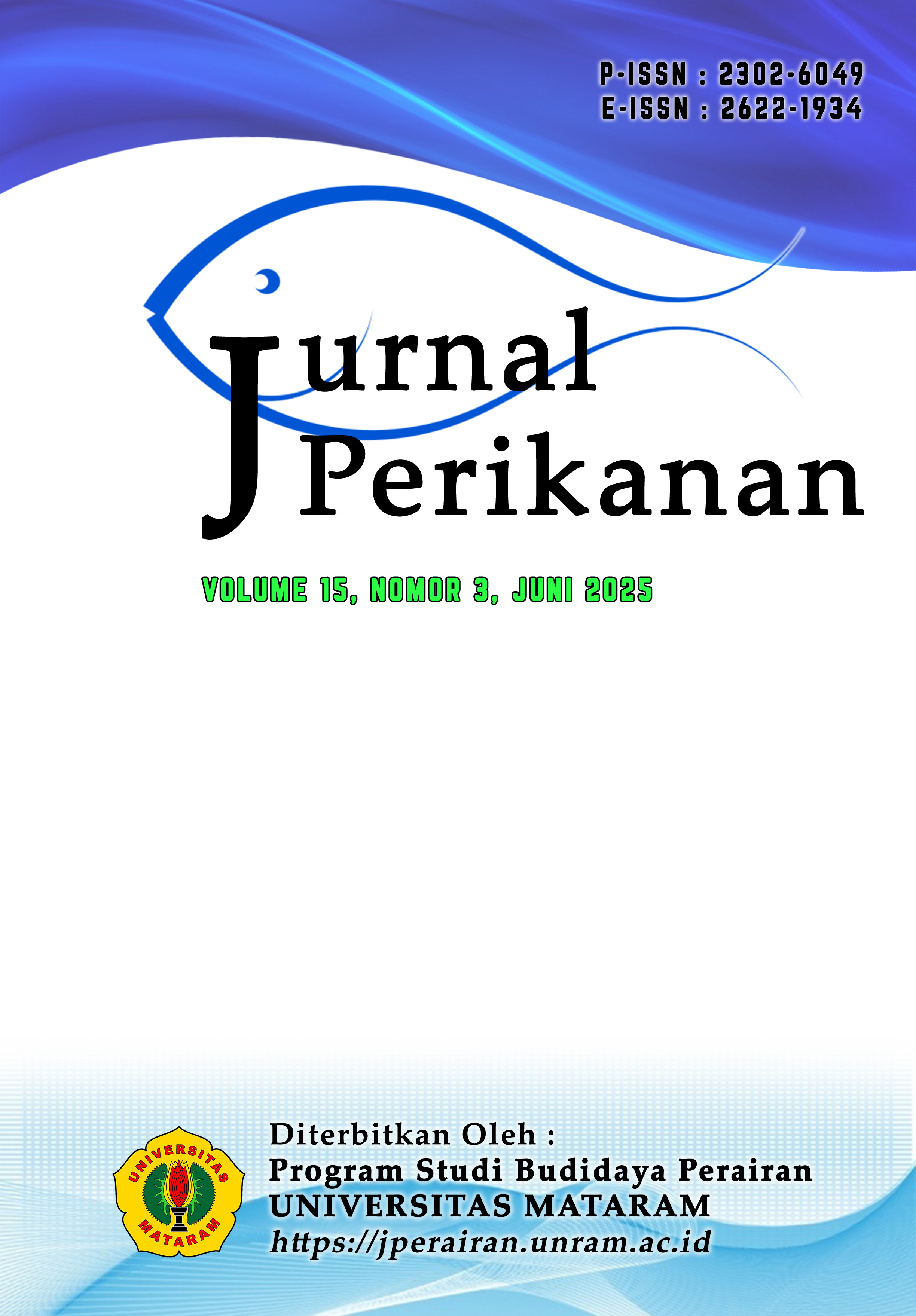COMPARISON OF MACROZOOBENTHOS ABUNDANCE BETWEEN COASTAL AND MANGROVE AREAS OF TANJUNG LIMAU KUTAI KARTANEGARA DISTRICT
DOI:
10.29303/jp.v15i3.1508Published:
2025-05-20Issue:
Vol. 15 No. 3 (2025): JURNAL PERIKANANKeywords:
Abundance, Macrozoobenthos, Mangrove, Muara BadakArticles
Downloads
How to Cite
Simanihuruk, D. H. T., Paputungan, M. S., & Ritonga, I. R. (2025). COMPARISON OF MACROZOOBENTHOS ABUNDANCE BETWEEN COASTAL AND MANGROVE AREAS OF TANJUNG LIMAU KUTAI KARTANEGARA DISTRICT. Jurnal Perikanan Unram, 15(3), 1208–1219. https://doi.org/10.29303/jp.v15i3.1508
Downloads
Download data is not yet available.

















